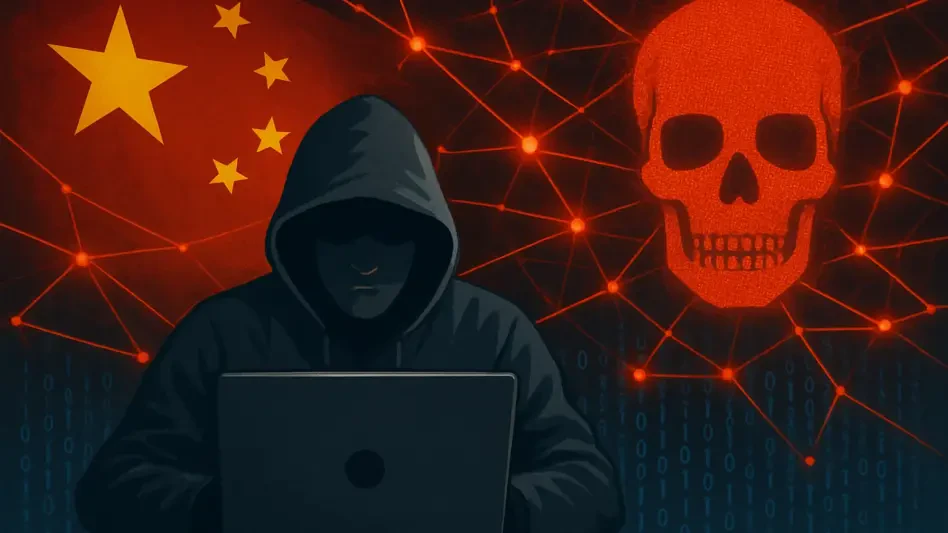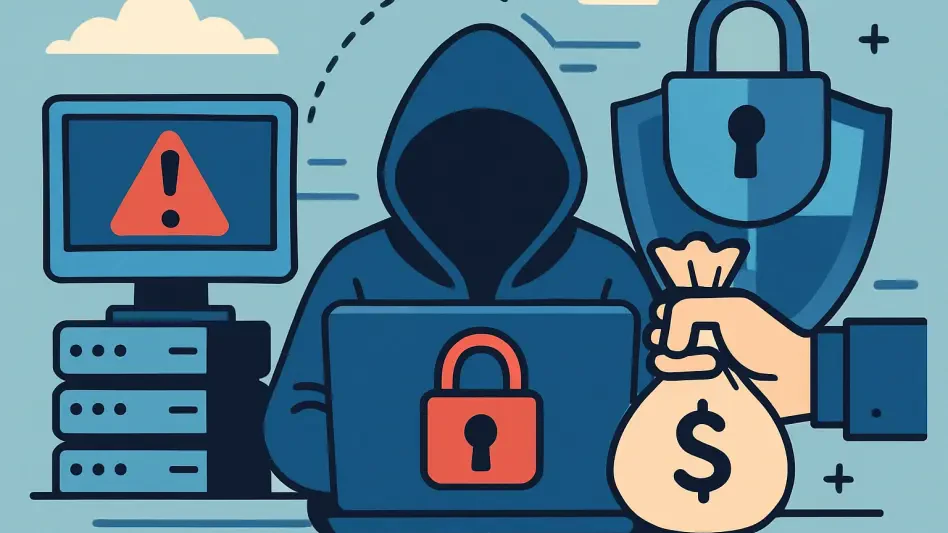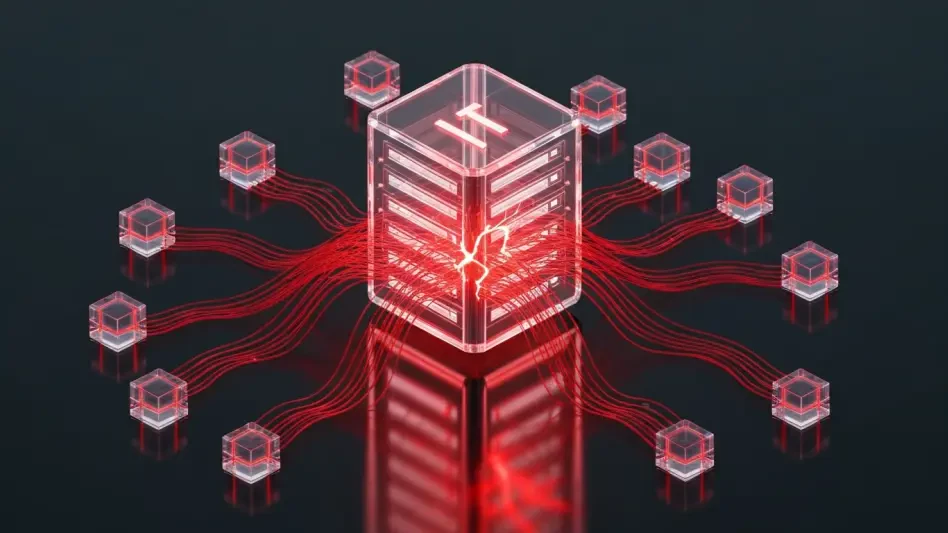In a chilling development that has sent shockwaves through the cybersecurity community, a recent report by Symantec has exposed a highly sophisticated cyber espionage campaign orchestrated by hackers with ties to China, exploiting a critical vulnerability in Microsoft’s ToolShell (CVE-2025-53770). These threat actors launched targeted attacks on telecommunications companies and government agencies across multiple continents, impacting organizations in the Middle East, Africa, South America, and Europe just days after a patch was released in July. This alarming incident not only highlights the speed and global reach of state-linked cyber threats but also raises urgent questions about the readiness of critical infrastructure to withstand such coordinated assaults. As the digital landscape becomes increasingly contested, the audacity and precision of these attacks serve as a stark reminder of the evolving challenges facing global security.
Unveiling the Cyber Espionage Campaign
The scope of this cyber espionage operation is both vast and deeply concerning, as it targets some of the most sensitive sectors of global infrastructure. Symantec’s detailed findings reveal that a Middle Eastern telecommunications company was among the first to be hit, with attackers gaining access within 48 hours of Microsoft’s patch release on July 19. Alongside this, government bodies in several African and South American countries, as well as a financial institution in Europe, were compromised. The strategic selection of targets suggests a deliberate focus on entities that hold critical data or play pivotal roles in national security and communication networks. This pattern of attack indicates a blend of opportunistic scanning for vulnerable systems and meticulously planned strikes against high-value organizations, painting a picture of a threat actor with both broad ambitions and specific geopolitical interests driving their actions.
Beyond the geographic diversity of the targets, the campaign’s execution reveals a chilling level of coordination and intent. The hackers employed tactics designed not just for immediate impact but for sustained access, with evidence pointing to credential theft and persistent footholds within compromised networks. Such methods are hallmarks of espionage, where the goal is often to extract sensitive information over an extended period rather than to cause overt disruption. The implications for affected nations are profound, as breaches of this nature could compromise everything from diplomatic communications to infrastructure stability. This incident underscores the reality that critical sectors are no longer just potential targets but active battlegrounds in a silent, digital war waged by state-aligned adversaries with advanced capabilities.
The ToolShell Vulnerability and Exploitation Tactics
Delving into the technical heart of this campaign, the exploitation of a zero-day vulnerability in ToolShell stands out as a critical enabler for the attackers. This flaw was weaponized before Microsoft could even release a patch, demonstrating the agility and resourcefulness of the threat actors involved. Even after the fix was made available on July 19, many systems remained unpatched, creating a window of opportunity that was swiftly exploited. A notable case involved a Middle Eastern telecom company, infiltrated just two days post-patch, revealing the dire consequences of delayed updates. Industry experts, such as Roger Grimes from KnowBe4, have long warned about this gap, noting that a significant percentage of systems often remain vulnerable for months. The call for automated patching solutions has grown louder in response, as manual updates simply cannot keep pace with the speed of modern cyber threats.
Equally striking is the sophisticated toolkit deployed by these hackers to maximize their impact and evade detection. Custom malware, including Zingdoor—a backdoor associated with the Chinese group Glowworm—and KrustyLoader, linked to UNC5221, played central roles in establishing control over compromised systems. Additionally, the attackers repurposed legitimate tools like Certutil, Procdump, and the open-source Sliver framework, adopting a “living-off-the-land” strategy that masks malicious activity within routine operations. Exploits for other vulnerabilities, such as PetitPotam (CVE-2021-36942), further amplified their ability to move laterally within networks. This blend of bespoke and off-the-shelf tools not only highlights technical prowess but also poses a significant challenge for defenders, who must now look beyond traditional malware signatures to detect subtle behavioral anomalies in system activity.
Strategic Objectives and Global Implications
The choice of targets in this campaign points to a clear strategic objective centered on espionage rather than chaos or financial gain. Telecommunications firms, such as the one breached in the Middle East, serve as gateways to vast amounts of communication data, while government agencies in Africa and South America likely hold sensitive national security information. The consistent use of tactics like credential theft and persistent network access suggests a long-term goal of intelligence gathering, potentially to influence geopolitical dynamics or gain strategic advantages. These attacks are not random; they reflect a calculated effort to undermine the integrity of critical infrastructure, where a single breach can have cascading effects on public safety and trust in governmental institutions. The stakes could not be higher for the affected regions.
Adding to the complexity of this threat is the apparent coordination among multiple China-based hacker groups, as identified by Symantec. Entities such as Glowworm, Budworm, and Sheathminer have been linked to the ToolShell exploits, with overlapping tools and methods suggesting a shared ecosystem of resources or objectives. Microsoft’s own analysis corroborates this, noting at least three Chinese espionage groups involved in similar activities. While definitive attribution remains elusive due to the intricate web of actors, the pattern strongly indicates state-sponsored or state-aligned motives. This global operation serves as a stark warning that cyber espionage is not a localized issue but a transnational challenge, demanding robust international cooperation to track, mitigate, and deter such pervasive threats to sovereignty and security.
Evolving Threat Landscape and Defensive Needs
The rise of China-linked cyber espionage, as evidenced by this campaign, marks a troubling shift in the global threat landscape. These actors have demonstrated an ability to evolve rapidly, combining custom malware with repurposed legitimate software to bypass traditional defenses. Tools like Zingdoor and KrustyLoader, coded in modern languages like Go and Rust, reflect a high degree of technical sophistication, while the use of utilities such as Certutil for malicious purposes complicates detection efforts. This adaptability necessitates a pivot in cybersecurity strategies, moving toward behavior-based monitoring that can identify unusual patterns even when attackers hide behind trusted processes. Without such advancements, organizations risk remaining perpetually one step behind in a cat-and-mouse game with increasingly resourceful adversaries.
Compounding the challenge is the systemic issue of patch management, which this incident has thrown into sharp relief. The narrow window between vulnerability disclosure and exploitation—sometimes mere days—leaves little room for error in applying updates. Yet, many organizations struggle with timely deployment due to operational constraints or lack of awareness. The advocacy for mandatory auto-patching, echoed by industry voices, emerges as a potential solution to close this gap, ensuring systems are protected without relying on manual intervention. Beyond technical fixes, there is a pressing need for international frameworks to share threat intelligence and coordinate responses. As critical infrastructure continues to be a prime target, building resilience through collaboration and proactive measures becomes not just a recommendation but an imperative for safeguarding global stability.
Strengthening Defenses Against Persistent Threats
Looking back at the unfolding of this cyber espionage campaign, it is evident that the attackers capitalized on both technical vulnerabilities and systemic delays to achieve their objectives. The swift exploitation of ToolShell by China-linked hackers, targeting telecom and government entities across diverse regions, exposed critical weaknesses in global cybersecurity preparedness. From the Middle Eastern telecom breach to government infiltrations in Africa and South America, the incidents reflected a calculated push for espionage through advanced malware and stealth tactics. Reflecting on these events, the persistent challenge of attribution—despite links to groups like Glowworm and UNC5221—highlighted the shadowy nature of state-aligned cyber operations.
Moving forward, actionable steps must be prioritized to counter such pervasive risks. Organizations should accelerate the adoption of automated patching systems to eliminate exposure windows, while governments must foster cross-border alliances for real-time threat intelligence sharing. Investing in advanced detection tools that focus on behavioral anomalies rather than known signatures is crucial, given the attackers’ reliance on legitimate software. Additionally, regular audits of critical infrastructure networks can help identify vulnerabilities before they are exploited. As the digital realm remains a battleground for geopolitical influence, these measures offer a pathway to bolster resilience and ensure that future campaigns face stronger, more unified resistance.








